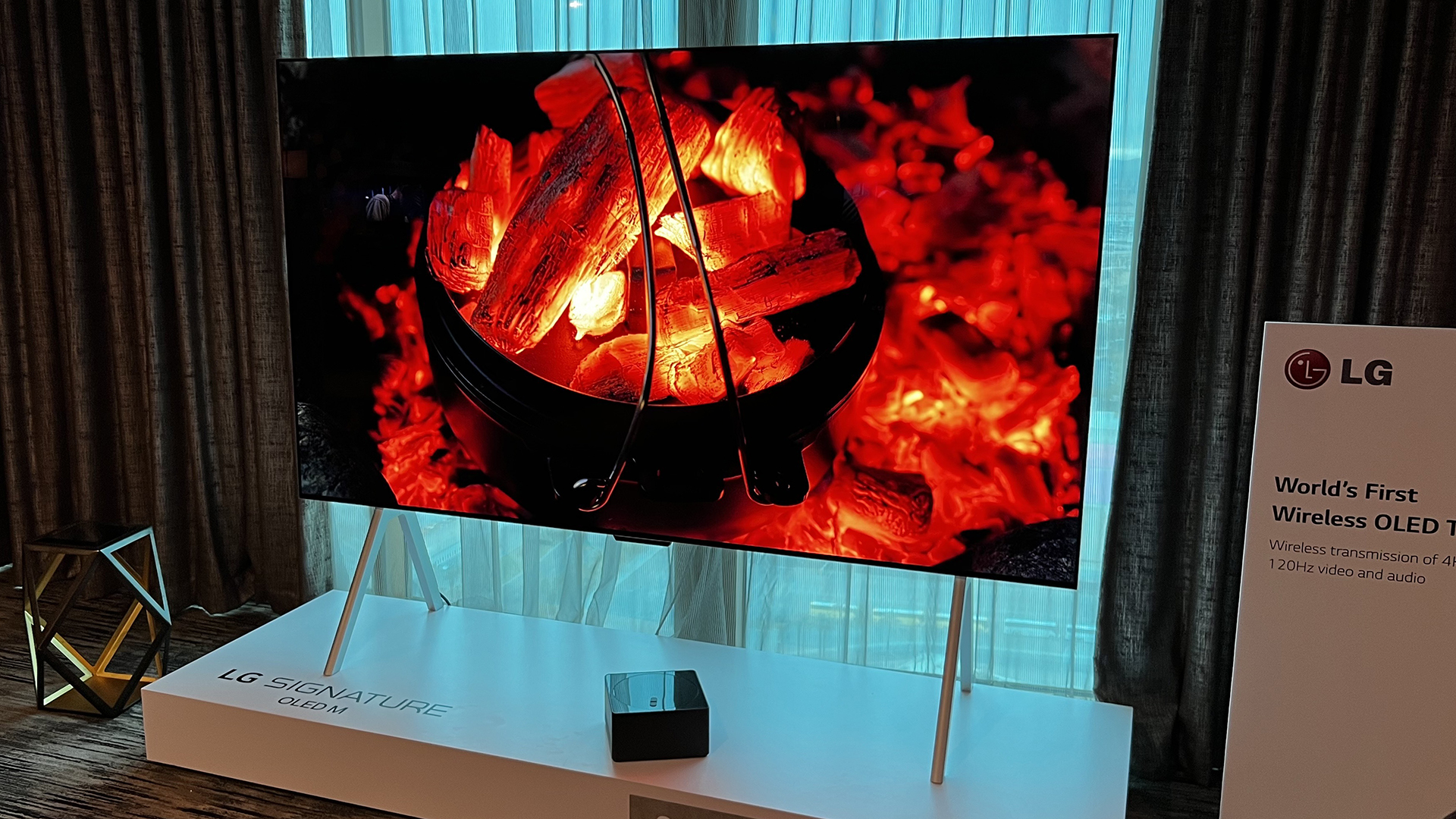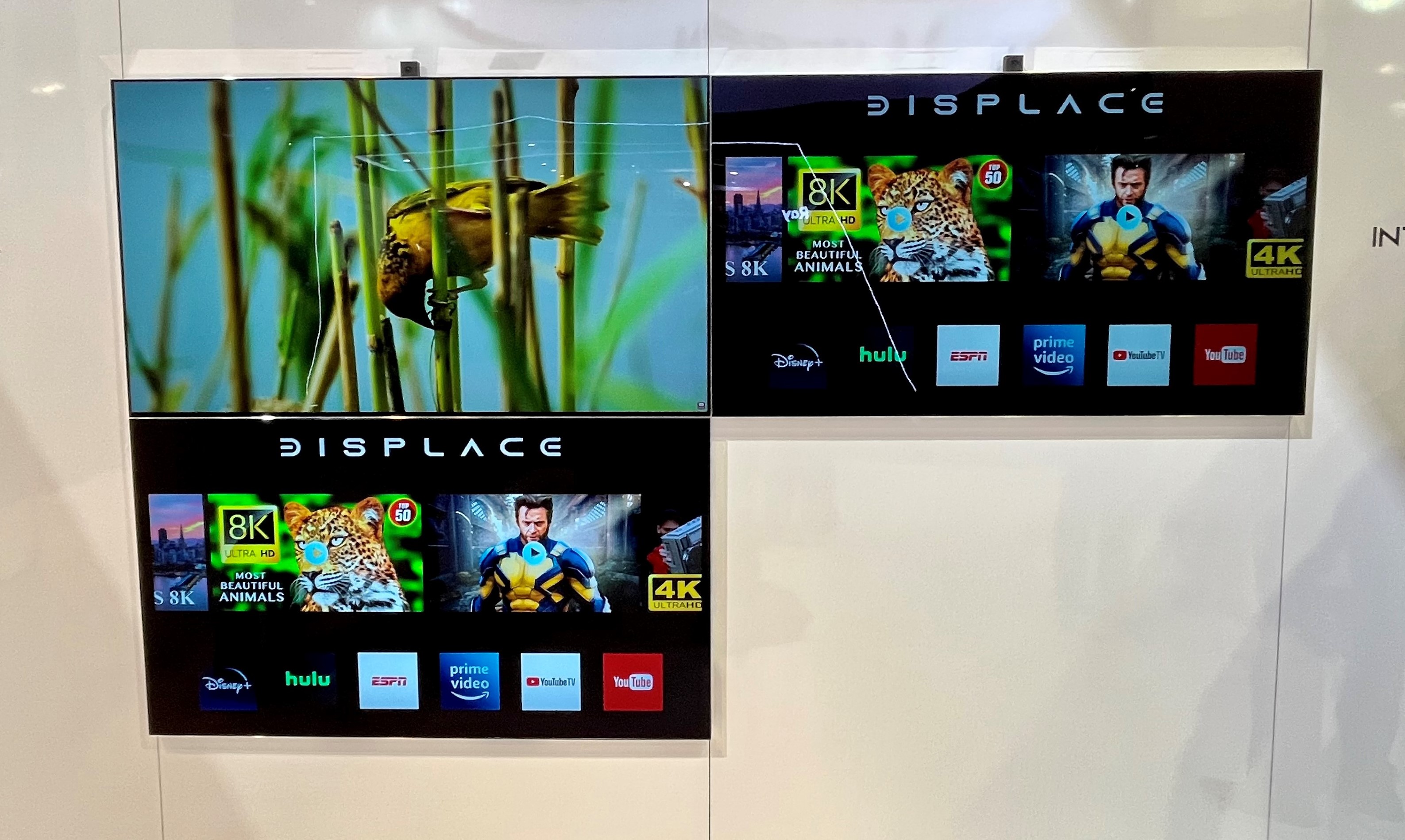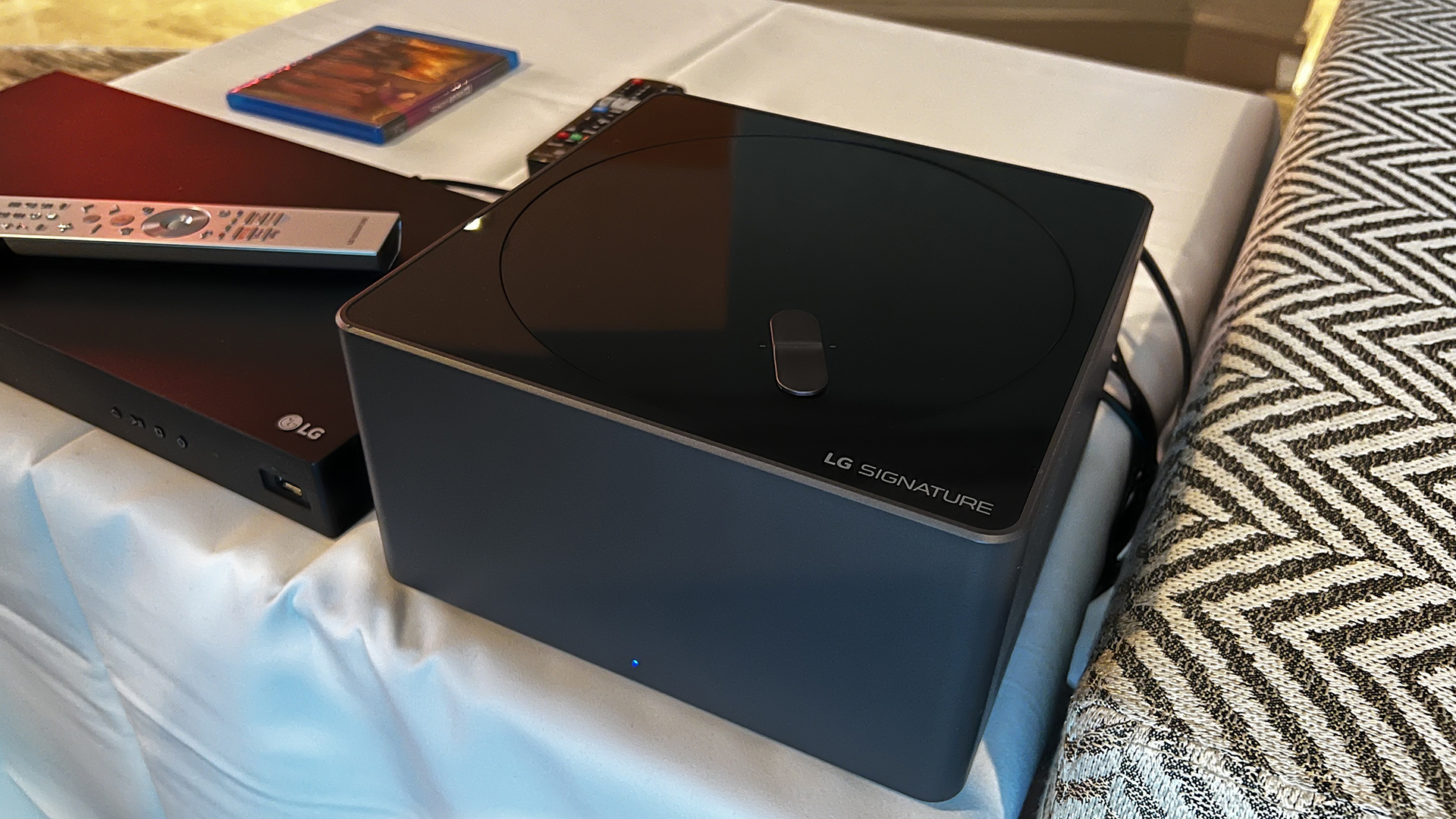Forget OLED or Dolby Atmos – the most exciting TV tech this year is the end of cables
LG’s world-first wireless OLED TV has left me desperate to cut the cord for good

The mere concept may sound like something out of Minority Report, but wireless TVs are almost upon us. At CES 2023, LG unveiled its Signature 77-inch LG OLED M3, and we saw the launch of the Displace OLED TV that (almost unbelievably) doesn’t need a power cable – well, the company claims its TV, which uses hot-swappable lithium ion batteries, can at least operate without one for a month of six hours a day viewing before the battery needs to be swapped out. Witchcraft is clearly afoot, and I’m all for it.
You can keep your 8K TVs and built-in Dolby Atmos sound systems. When it comes to the television tech I’m most excited for in 2023, I'm all about our imminent cable-free future. As a TV lover who’s gone to great lengths to cable manage his way out of clutter, the idea of my front room containing a wireless TV without a single lead attached to it is unbelievably exciting.
Coming from a gaming background, I’ve long appreciated the gradual evolution to wireless tech. 20 years ago, I was only ever one bad Gran Turismo 3 race away from accidentally yanking my PlayStation 2 through the air because it was tethered to a wired controller. Yet with the evolution of pads like the PS3's SixAxis and the PS5 DualSense, my agitated palms are no longer a console-smashing flight risk.

Going from a wireless PlayStation pad to fully wireless TVs is a whole different kettle of enchanted fish, though. When I first read about the 55-inch Displace OLED TV, my brain could barely comprehend the key takeaways:
It can function without a single cable going directly to the screen thanks to a wireless base station – although it does require a power connection every few hours, because it runs from a battery. There's also the ability to combine four of these ludicrous sci-fi panels together to create a single, monstrous 110-inch TV. Oh, and don't forget the fact that you can attach the Displace to a wall without traditional mounting tools – you can thank proprietary vacuum tech for that miraculous tech triumph. It just stick to any wall you want it too (within reason).
My aforementioned (oh so outdated) reference to Tom Cruise manipulating floating screens to catch would-be murderers is actually on the cards, too. By using a pinch-and-expand gesture, you can take an image that’s being displayed on one Displace TV and spread it to all four to create a unified screen of colossal proportions. Now I just need to dig up that spare $9,000 crammed down my sofa cushions.
The 120Hz wireless future
The LG M3 OLED is also incredibly exciting. This wireless goliath is due to be released in the second half of 2024, and it comes in 77-inch, 83-inch and 97-inch sizes. It feels like the natural evolution of the innovative ‘One Connect’ boxes that you get with Samsung TVs, such as the Samsung QN95B and Samsung QN900B.
The M3 OLED has a similar gadget to get around the fact it doesn’t have any HDMI ports. Called the ‘Zero Connect’ box, this chunky gizmo is about the size of an Xbox Series X, and although it may not be all that pretty, it’s capable of sending 4K HDR images at 120Hz to the screen – the first time that's been possible in a real product. Current wireless 4K HDMI tech is limited to 60Hz.
Yes, it’s a bit of a shame it only has three HDMI ports, but seeing as I only currently use two ports on my LG C2 OLED – I run four devices through the Philips Hue Play Sync Box – that’s in no way a deal-breaker.

The main reason I’m so excited by the prospect of wireless TVs is because I literally can’t access the HDMI connections on the back of my current TV. Sitting flush to my living room wall, there’s simply no space to reach around to fiddle with cables. Seeing as mounting the 77-inch beast almost shattered my knees and snapped the spine of the friend helping me, there’s no way I’m going to take it off the wall to connect more HDMI cables.
Another problem with traditional HDMI connections is that it limits where you can place the tech you connect to your screen. Much as I love both of them as consoles, the Xbox Series X and PlayStation 5 are hardly lookers. One could pass for a mini-fridge, while the other looks like the sort of ungainly gizmo you’d see in the background of a Babylon 5 episode. Shunting both out of my immediate eyeline is a prospect I’ve long pined for.
The notion I could discretely place my streaming devices and consoles out of sight is an appealing one. The M3’s Zero Connect box is powered by a proprietary RF technology that’s said to have three times less latency than Wi-Fi 6. Not only that, but the box can be placed up to a generous 32 feet away from the TV. Seeing as I don’t live at Wayne Manor, said distance is more than ample enough to squirrel my devices away in a corner of my living room.
If these two OLED TVs are the start of a trend that leads to the total ditching of cables in the best TVs, deal me in. A future where all our devices connect to each other wirelessly has me going weak at the knees… yes, I need to get out more.
As someone who has spent countless hours untangling hateful masses of HDMI leads and crisscrossing power cables, the wireless revolution can’t come soon enough.
Get daily insight, inspiration and deals in your inbox
Sign up for breaking news, reviews, opinion, top tech deals, and more.
Dave is a freelancer who's been writing about tech and video games since 2006, with bylines across GamesRadar+, Total Film, PC Gamer, and Edge. He's been obsessed with all manner of AV equipment ever since his parents first bought him a hideously garish 13-inch CRT TV (complete with built-in VCR, no less) back in 1998. Over the years he’s owned more plasma and OLED TVs than he can count. On an average day, he spends 30% of his waking existence having mild panic attacks about vertical banding and dead pixels.
